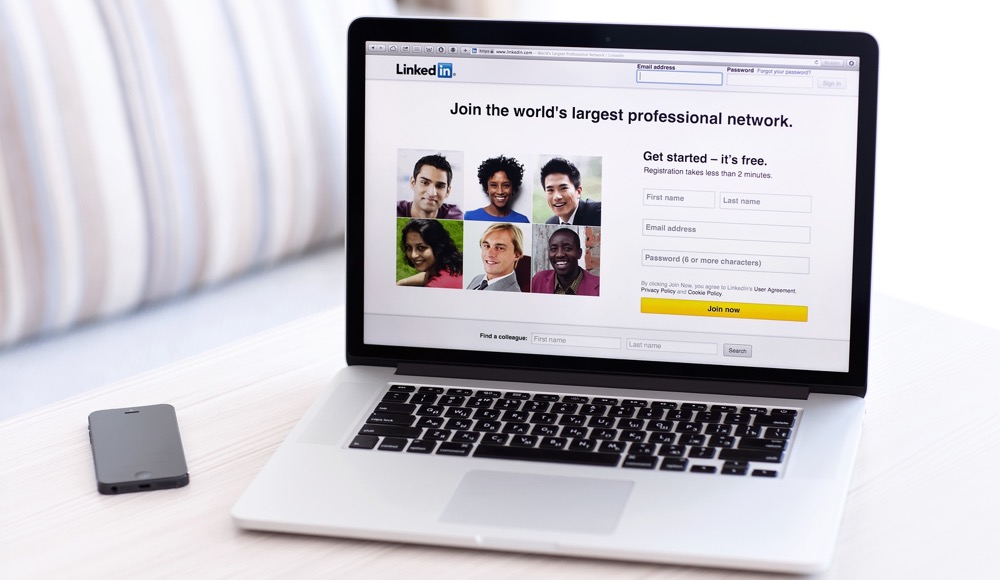Get Found by Recruiters on LinkedIn: 13 Steps You Can Take Today

Decades ago, when a candidate was in transition, they would personally show up to a potential employer and fill out an application. Years ago, transition candidates would compile a resume detailing both the position they were seeking and their current and past job duties.
Today, career transition is different. A resume is still the foundation of your search, but it is no longer a simple document. Now, your resume is a sales presentation that demonstrates your unique value. It must answer the employer’s question of, “What can you do for me?”
No matter how great your resume is, though, it is worthless unless employers can find it. This is why LinkedIn is key for today’s job seekers: 89 percent of recruiters use LinkedIn to fill positions, and 94 percent of recruiters use LinkedIn to vet candidates.
Savvy candidates maximize their LinkedIn profiles and presences to propel their career transitions, progressions, and trajectories, all while building a strong network of alliances for current and future growth.
What Recruiters Want to See in Your LinkedIn Profile
Recruiters must be shrewd in reviewing profiles. Their time is precious and the candidate pools are vast. Fine-tuning the following areas of your profile will get recruiters to notice you and demonstrate that you are worth their time and effort.
1. A Complete Profile
Anything below an “all-star” status profile signals to a recruiter that you are neither market savvy nor interested in putting forth the effort to advance your career.
The seven elements needed to reach all-star status are: profile picture, experience, skills, summary, industry and location, education, and connections. Make sure you complete each of these aspects of your profile! If you need help, check out “LinkedIn All Star Status Rocks – How to Reach It in 7 Steps.”
2. A Photo
Your photo should be professional, current, and in line with your industry and position –or the position that you want. If you need a little guidance on selecting the right picture, here’s a post I wrote on the subject.
3. Recommendations
Recommendations are instant, accessible referrals that should support your value and skill set. For tips on asking for and receiving recommendations, take a look at “5 Steps For LinkedIn Recommendations That Work For You.”
4. Activity/Engagement
Activity increases your LinkedIn SEO while demonstrating your level of commitment to your job search and industry. Activity is increased with engagement.

The size of your network can also demonstrate your business savvy. Opinions vary on the topic of how many connections you should have, but the general rule of thumb is: under 50 connections is novice; 50-100 connections is a good starting point; 300-400 connections conveys engagement; more than 500 connections conveys a savvy, connected candidate.
5. Results
Your summary and experience sections should demonstrate your uniqueness, value, passion, engagement, and effectiveness.
Rather than listing bullet points of accomplishments, paint the full picture of who you are as a person and contributor. Use action words and highlight accomplishments in a manner that demonstrates how you perform your responsibilities and create value for your organization, team, position, and/or clients.
6. Relevance
Relevance means demonstrating the trajectory of your career and/or building a bridge between your current career and the new career your desire.
To demonstrate relevance, tell your story the way you want the recruiter and potential employers to see your career path. Build from one position to the next by portraying your responsibilities, accomplishments, skills, and abilities as all part of one natural progression.
7. An Accurate Title
Your current and past titles should match what is on your resume and what will be listed on a background check. This is a matter of integrity.
8. A Value Title, if Unemployed
If you simply say you are “Unemployed” or “Seeking Opportunity,” employers may take that to mean you are looking for any old job.
Similarly, you should steer away from listing a title in connection with any volunteer work you are doing. This could be misleading, as many employers will think it means you work for the organization, rather than volunteer.
Create a job title using key words for the position you desire or have held. Include industry, value, and position. An unemployed inventory manager looking for work in the health care industry could use a tile like: Inventory Manager Looking to Increase Profitability, Accountability & Cost Reduction in Health Care.
9. Industry

10. Keywords
Keywords are critical when leveraged in the title, summary, experience, and headline sections of your profile. Research your industry or desired positions to determine the appropriate keywords.
Quick tip: Use a space between keywords. For example, write “sales / marketing” instead of “sales/marketing” to ensure that search engines recognize both words.
For tips on finding and using keywords, check out “How & Where to Best Use Keywords for LinkedIn Profile SEO.”
11. A Complete Job History
To be considered complete, a job history should have descriptions for the last three positions you held. Relevance and results are important to demonstrate in your experience section. What matters is not what you were hired to do, but you actually did and how.
Avoid pasting your resume into this section. Your description should be a conversation started that prompts a request for your full resume – not a simple repeat of your resume.
12. White Space
Remember that a person is reading your profile. They want to be able to find the information they are looking for quickly. Therefore, you want to make sure you profile is reader-friendly. Short paragraphs and sparing use of characters, if appropriate, will go a long way here.
To find characters that can be used in LinkedIn, please take a look at “Character Limits & Special Characters For LinkedIn Profiles.”
13. Your Voice
The difference between your LinkedIn profile and your resume is the voice. LinkedIn is a one-on-one conversation with the individual reader. Compose your profile as though you were sitting across from your audience in a business casual environment and answering the question, “Tell me about yourself.”
Need a little help finding and using your voice on LinkedIn? Take a look at this post.
Conclusion
Strengthening these important elements of your LinkedIn profile will both increase the chances of recruiters and potential employers finding you and help you build a strong network. Don’t waste anymore time with a weak LinkedIn profile. Step it up today!

